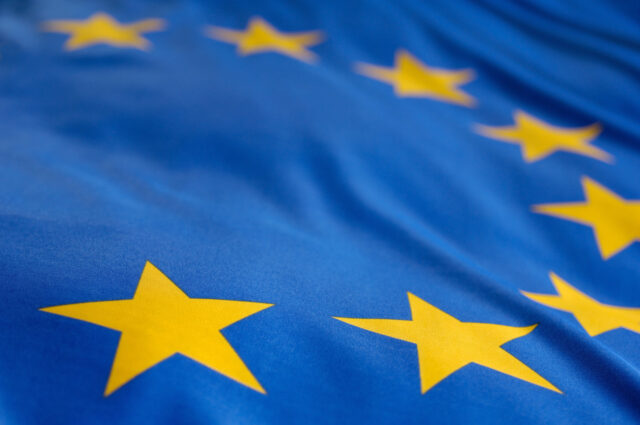Ever since Scottish economist and philosopher Adam Smith outlined his free market theory and developed the concept of the division of labour, the concept of free trade has dominated economic debates.
The World Economic Forum estimates that there are currently over 420 regional trade agreements shaping international business. Other estimates put this figure above 500. These are not all Free Trade Agreements (FTAs); some are not-entirely-dissimilar Preferential Trading Areas (PTAs). Collectively, they shape global commerce.
FTAs don’t simply remove tariffs. By tackling issues that obstruct the flow of goods and services, they encourage investment and innovation, safeguard intellectual property and deliver clarity around e-commerce and government procurement.
Benefits of FTAs for UK businesses post Brexit
With the UK having left the EU as of 1 February 2020, the importance of FTAs for British businesses wanting to export or import goods and services will grow significantly. Currently, UK plc’s international trade is regulated by agreements put in place by the EU. During the transition period, set to last until 31st December 2020 unless a deal is negotiated sooner, EU legislation, including trade agreements, will continue to apply.
In the meantime, the UK can begin negotiating new trade deals with partners around the world. These could enable UK businesses to expand into more markets, lower production costs and grant access to a wider pool of talent.
However, many businesses fail to leverage the clear benefits of prescribing to a trade agreement. A study by KPMG International and Thomson Reuters highlighted that over 70% of businesses engaging in international trade do not make use of the FTAs at their disposal. Why would they let such opportunities go unrealised?
The reasons for this are manifold
Often, it’s because those benefits aren’t quite as clear as you might imagine. FTAs can be complex and difficult to understand and apply. Even legal experts can find it challenging to navigate the complex web of interactions between different trade agreements and domestic rules. These issues are compounded by legal texts not only being difficult to access but also often out of date and not available electronically, thereby not easily searchable.
This results in businesses not using the agreements to their advantage and undermining expected positive socio-economic outcomes. And, while effective use of FTAs presents a challenge for all businesses, it’s especially cumbersome for small, medium or micro-sized players who often lack the resources required for interpretation and compliance.
The administrative challenge
Businesses typically manage FTAs manually. This is both time-consuming and labour-intensive. For example, when supply chain managers source a new component, they must manually determine which FTAs apply and obtain product information, and certificates of origin from the supplier to ensure compliance. Managing thousands of products for hundreds of agreements can turn into a mammoth task, disadvantaging importers before they are even out of the starting blocks.
The non-compliance nightmare
Compliance can also prove a laborious and convoluted process. Many businesses feel that by striving to be compliant with a vast number of FTAs, they are adding an unnecessary burden on their operations and losing sight of the core processes that generate profit. FTAs may be designed to break down barriers, but many perceive them as creating new ones, as the burden associated with them hampers business productivity and competitive advantage.
What’s a business to do?
The benefits of FTAs far outweigh the challenges, yet it can be hard for importers and exporters to seize upon them. But does it have to be that way? One solution to both the administration headache and the compliance conundrum is to deploy a software application that automates, optimises and executes all aspects of global trade compliance. These solutions streamline global sourcing, minimise supply chain risk and easily break down logistical and administrative requirements.
Supply chain managers looking to manage FTAs more effectively should ensure their solution addresses these five key areas:
- Bill of Material (BOM) qualification –should speed up the analysis process with direct import of multi-level BOMs) from Enterprise Resource Planning (ERP), manufacturing and Warehouse Management Systems (WMS).
- Certificate management – should assist importers and exporters manage certificates of origin, including FTA statuses that are maintained in a global master database.
- Product claim details and storage – should provide a supporting page for every FTA.
- Supplier solicitation campaigns – search-and-query features should enable importers to send mass or targeted requests to suppliers for origin information.
- Trade agreement identification – should incorporate data for supplier relationships as well as import and export transactions to accurately determine potential agreements available for submitting preferential claims.
E2open’s Global Trade Management applications cut across global sourcing, supply chain risk, logistics and trade compliance processes. Country-specific regulatory information is gathered, interpreted and updated daily by E2open’s own trade professionals. We do the work so you can do yours.
Whatever happens with Brexit, the next few years are expected to usher in a new era of international trade, fortified by sophisticated and pervasive digital technology that eliminates trade barriers, improves communication and levels the global playing field for smaller businesses and startups. So, are you ready?











